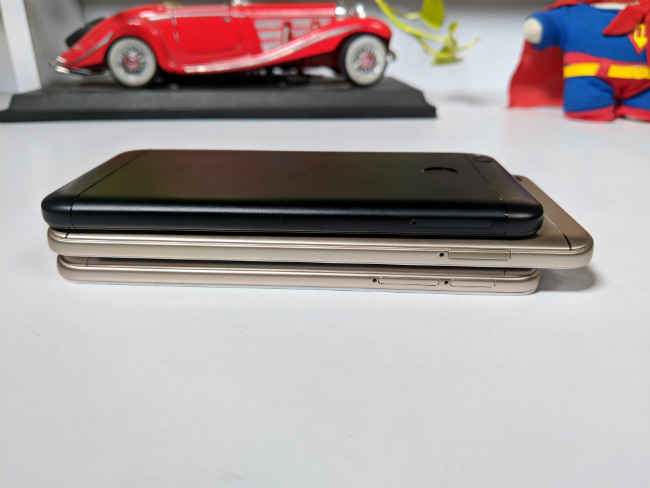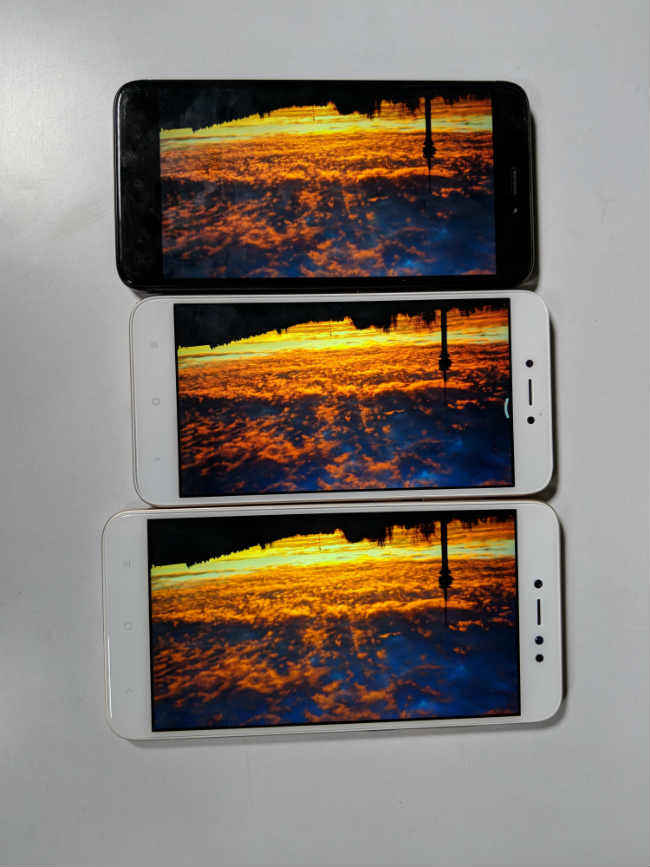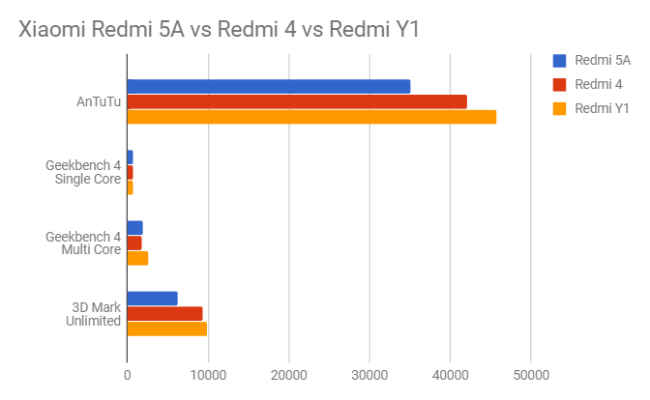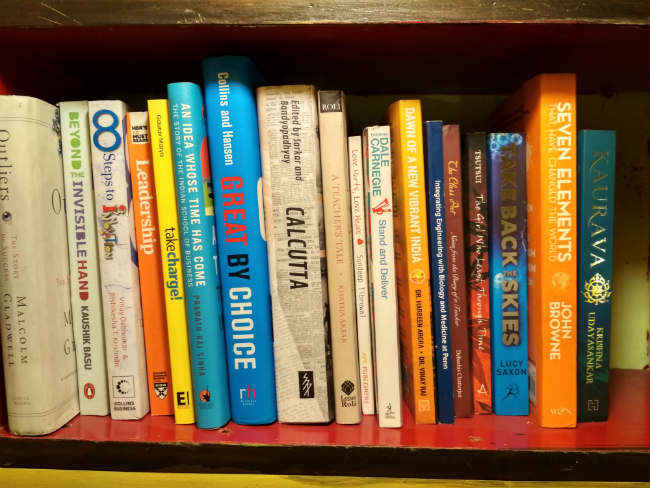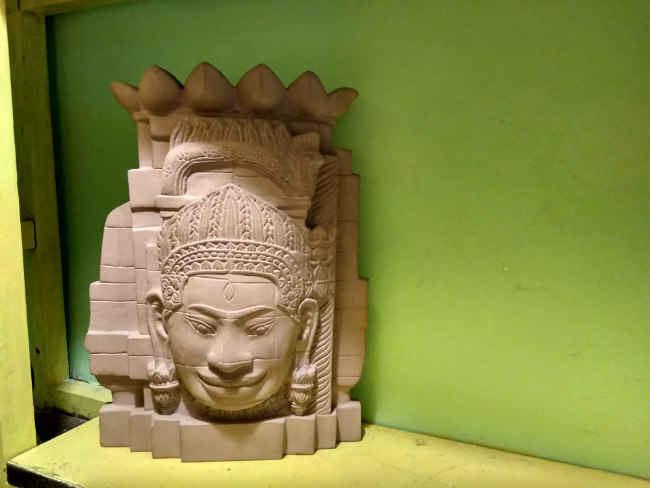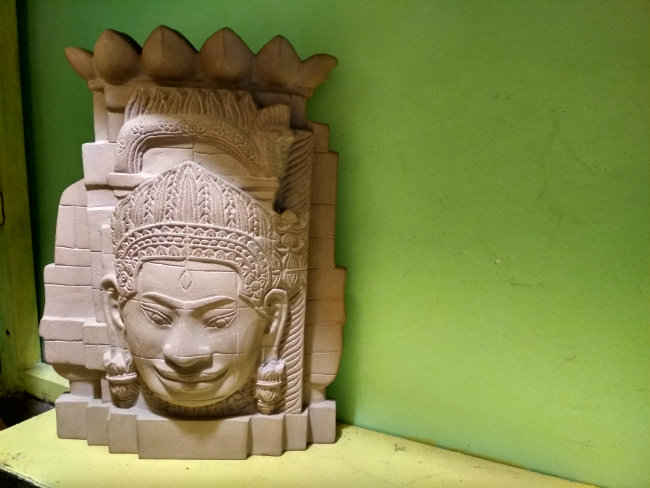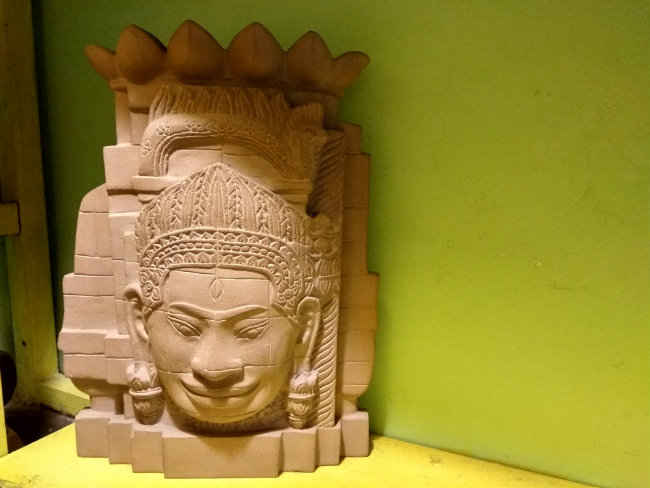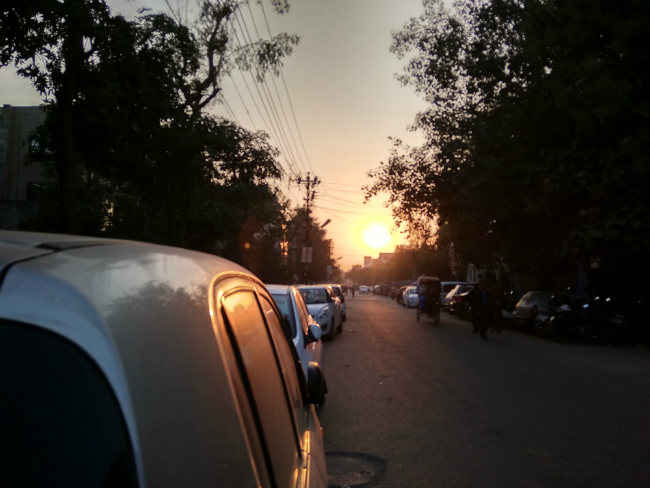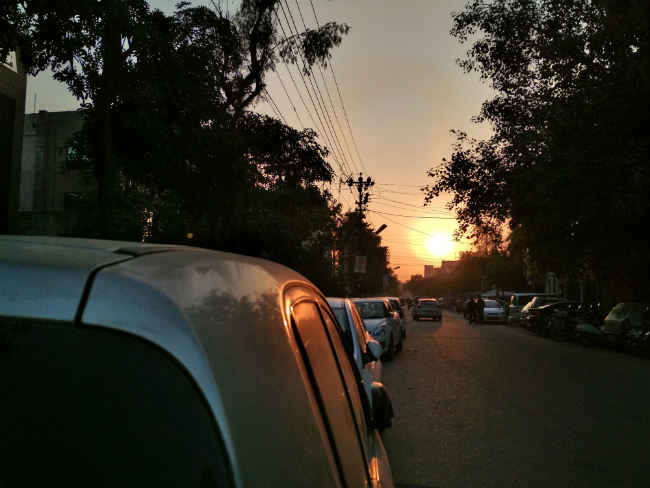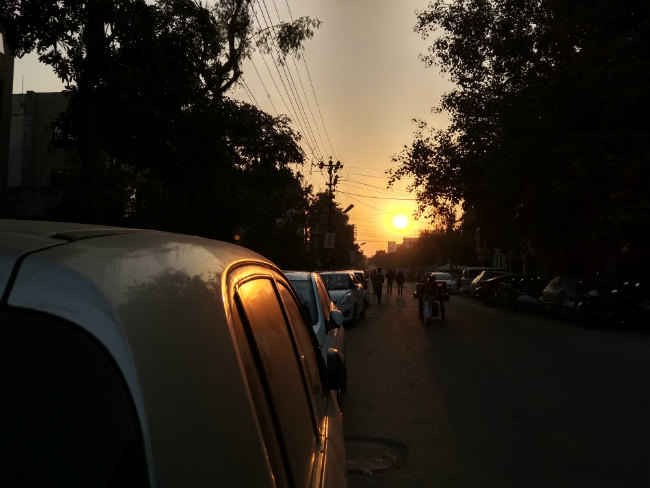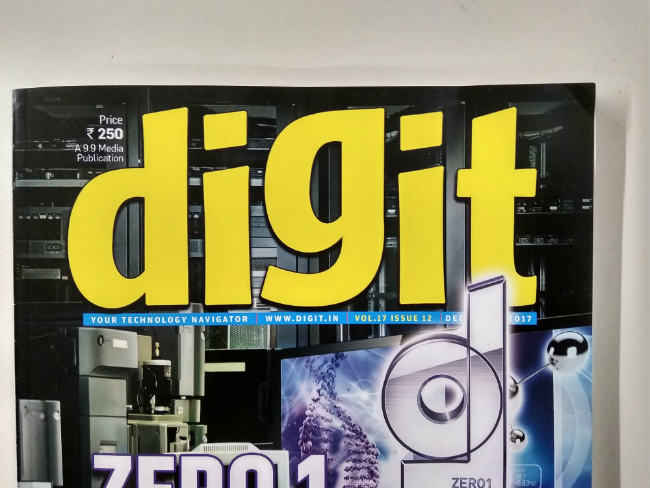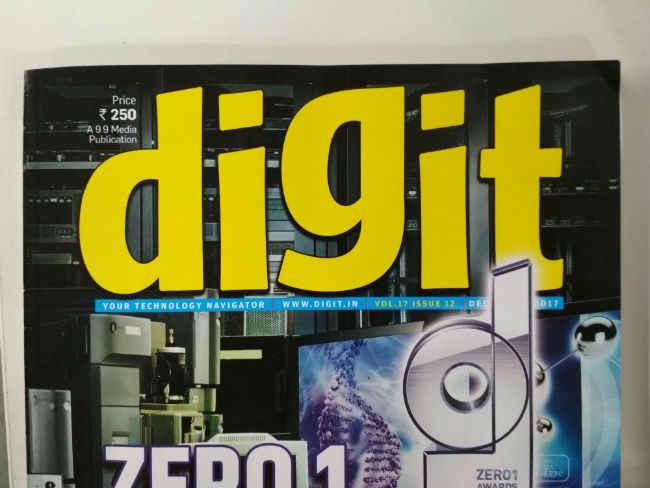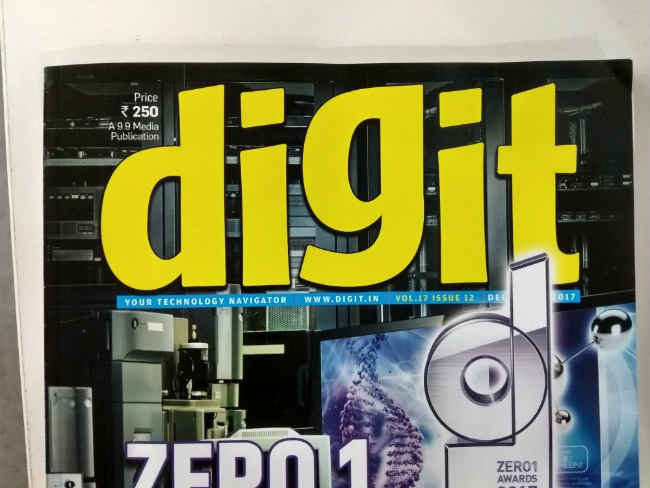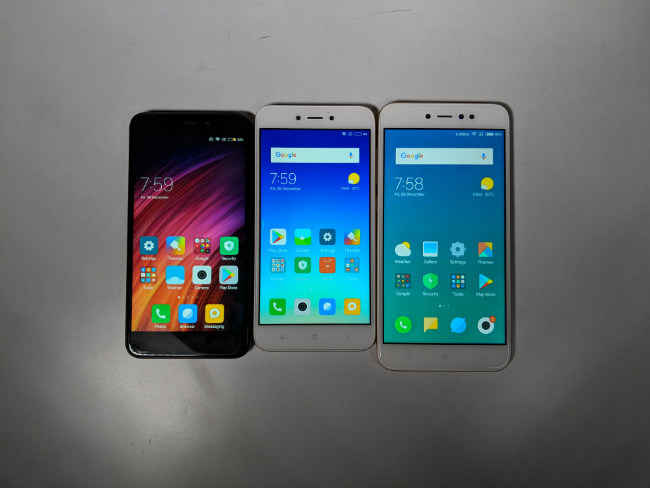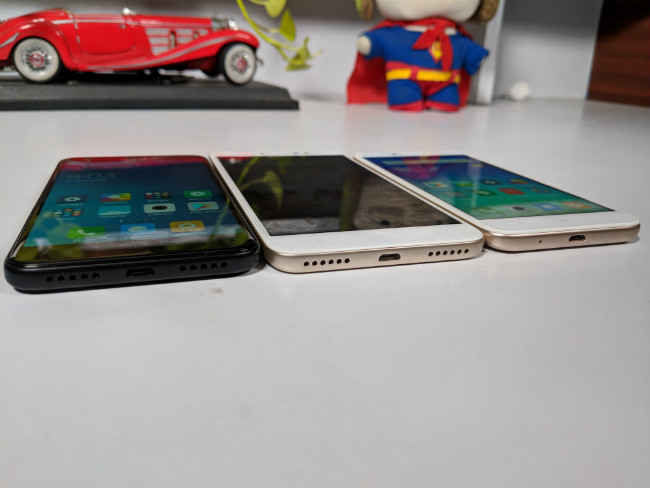Xiaomi Redmi 5A vs Redmi 4 vs Redmi Y1: Which budget phone offers most value?
Xiaomi bombarded the budget phone segment this year with three phones. Offered in a range of price, the three phones are quite difficult to tell apart. So we took it upon ourselves to compare to see which one offers the most value for money.
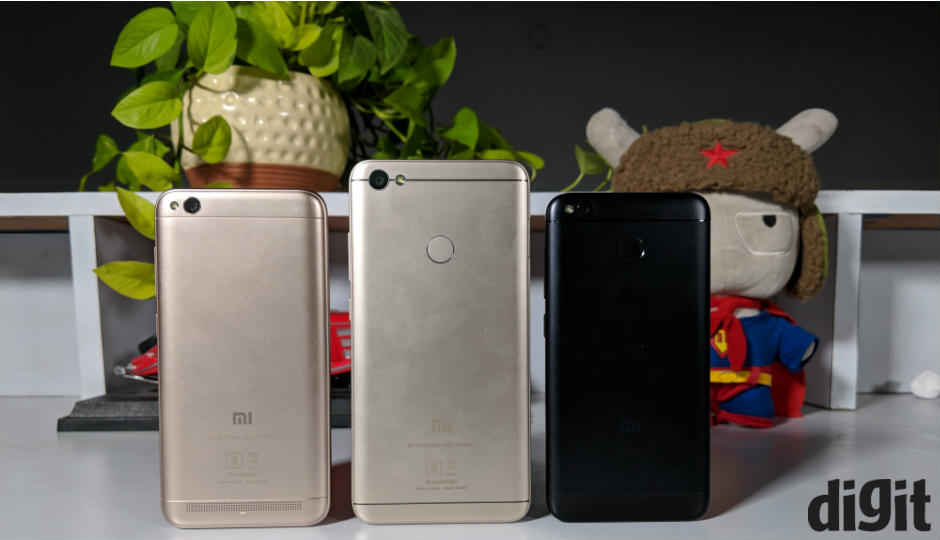
2017 saw a blitzkrieg of phones by Xiaomi under Rs 10,000 and suddenly, the budget phone segment was teeming with options. So much so, that choosing one from the other has become a problem.
 Survey
SurveyOf course, Xiaomi has differentiated its offerings by stating which is for whom. The Redmi 5A, branded “desh ka smartphone” is for first-time buyers while the Redmi 4 is for those who need a long battery life and the Redmi Y1 is for selfie-lovers.
But branding aside, a phone isn’t just used for one purpose. A person who loves clicking selfies will want a functional phone, while one who will require a day-long battery life will want to do something with it as well.
The three devices are also differentiated by pricing. At the budget segment, every rupee counts when one is making a decision. To make life easier for everyone, we pitched all three phones against each other to see who comes out as the most reliable, offer the most value for money and is an overall all-rounder.
The Redmi 5A is the cheapest at Rs 4,999 while the Redmi 4 starts from Rs 6,999 and the Redmi Y1 is the most expensive of the lot, starting from Rs 8,999.
Considering these are all budget phones where Xiaomi has found every way to cut corners without compromising on the overall offering, one should not have high expectations out of these. That being said, all the three devices are good entry-point to the Android, or more importantly, to the MI ecosystem. But which is the best? Let’s find out.
Design and build
All the three phones have used plastic generously in the body, with hints of metal in them. Save for one. Ironically, the most expensive of the lot, the Redmi Y1 is all plastic. You won’t really understand it at first glance though. Xiaomi has put a metallic finish on top of the plastic rear panel so the hand feel is quite smooth. The rear panel of both the Redmi 4 and the Redmi 5A are also made of plastic but it’s housed inside an anodised aluminium frame, rendering some sturdiness in them.
The front panel of the all the three phones are almost identical save for the placement of the front camera and the proximity sensor. If not for varying screen sizes, it’s very difficult to tell them apart.
There is Corning Gorilla Glass protection on top of the Redmi 4 and the Redmi Y1 while the Redmi 5A is protected by an Asahi Dragontail glass. While Gorilla Glass offers more protection from drops, the Asahi glass offers better scratch resistance. The Redmi 5A is meant for first-time buyers, a scratch-resistant display is actually more useful than drop protection. There is a chance that a person new to the world of touchscreens will not know how to use it properly even while taking every precaution to not drop the phone.
Among the three, the Redmi 4 feels the most premium. It is compact and the anodised finish and a minimalist rear panel oozes some bit of luxury in it.
Winner: Redmi 4
Display
The three phones sport 720p resolution displays. The Redmi 4A and the Redmi 5 both have 5-inch display while the panel on the Redmi Y1 is slightly bigger at 5.5-inch. These aren’t bezel-less displays and the aspect ratio is of 16:9.
The displays on all the three phones are not at all true-to-source. But having said that, the Redmi Y1 is closest to displaying natural colours than the rest. Both the Redmi 4 and the Redmi 5A have warmer displays while the Redmi Y1 is comparatively cooler. As a result, the reds and oranges on the Redmi 4 and the Redmi 5A will look punchier, but elements like the sky will look unnaturally saturated. Also, because of a higher pixel density in the Redmi 4 and the Redmi 5A, images and videos will look sharper than the Redmi Y1. Because the Redmi Y1's screen is bigger and all three have 720p resolution, the Y1’s pixel density is lower which results in dirty, noisy images on the screen.
Then again, these are budget smartphones. At this range, a buyer will look to buy the phone that has a punchier, brighter display. In that case, the Redmi 4 and the Redmi 5A both are good options. They are also cheaper than the Redmi Y1, and more compact.
Winner: Tied between the Redmi 4 and the Redmi 5A
Performance
Once again, all three being entry-level smartphones, it will be unrealistic to expect resource-intensive apps and games to run smooth. All the three phones use entry-level Snapdragon processors which handle general operations on the phone quite well. You will not face long lags while browsing the phone. Opening apps will take some time and a lot of apps open in the background will inevitably slow the phone down.
The Redmi 5A is the most underpowered among the three, because of its cheaper price tag. It uses a quad-core Snapdragon 425 clocked at 1.4GHz while the Redmi 4 and the Redmi Y1 both use the newer octa-core Snapdragon 435 also clocked at 1.4Ghz. We received the 3GB variants of the Redmi 4 and the Redmi Y1 for review while the Redmi 5A had 2GB of RAM. Both the Redmi 4 and the Redmi Y1 have a higher 4GB RAM variant while the Redmi 5A has a 3GB variant.
Synthetic benchmarks pegs the Redmi Y1 as more powerful than the Redmi 4A and the Redmi 5, and that’s sort of true. The Redmi Y1 is indeed smoother than the Redmi 4 but only slightly. You will only understand the difference if you put the two side by side and open apps. The Redmi 5A on the other hand is the slowest of the lot, to the point that it becomes unusable at times. For instance, the Redmi 5A camera takes a significantly long time to process the photo you take. I had to wait more than 30 seconds to click a second photo. The Redmi 4A also took some time but it’s minimal and that much processing time is expected in a budget phone.
In terms of performance alone, the Redmi 4 and the Redmi Y1 are at par with the Redmi Y1 edging out the Redmi 4 slightly in benchmark scores, but that wouldn’t really convert to much in real world usage. Since the Redmi 4 is priced lesser than the Y1, you should get the Redmi 4 if performance is what you are looking for.
Winner: Redmi 4
Camera
In a segment where the underlying hardware is essentially the same across offerings, the camera quality is one category which can make or break a deal when getting a smartphone. One of the phones in contention is also marketed as a selfie specialist. The Redmi Y1 is a selfie-centric phone by Xiaomi that sports a 16-megapixel camera on the front with an LED flash and f/2.0 aperture. The Redmi 4 and the Redmi 5A aren’t focused on selfies, so they have 5-megapixel shooters in the front. On the back, all the three phones have the same 13-megapixel sensor with f/2.2 aperture, phase detection autofocus (PDAF) and LED flash.
But the similarities end there. Here, the price matters, but not by much. Yes, the Redmi Y1 has a better selfie camera, but it’s only slightly better than the Redmi 4. The Redmi 5A, on the other hand, is marred by poor processing, although it’s image quality is commendable if you consider the price it retails for.
Indoor Shot
Redmi 5A
Redmi 4
Redmi Y1
Here, the Redmi 5A does shadows better than both the Redmi Y1 and the Redmi 4, although there is more noise. Also, the Redmi 5A tends to oversaturate the colours. Again, the details are better in the Redmi 4 and the Redmi Y1 than the Redmi 5A, even though all three are using the same camera setup.
Indoor white balance
Redmi 5A
Redmi 4
Redmi Y1
Most Redmi phones, if not all, have a white balance problem. Xiaomi tends to oversaturate its photos so the white balance is always off, towards the warmer side. As a result, the phone which has the least white balance distortion will win. Among the three, the Redmi Y1 produces the warmest photos. The Redmi 4A and the Redmi 5 are distinctly more true to source than the Y1, but the Redmi 4 a little more so than the 5A.
Outdoor landscape
Redmi 5A
Redmi 4
Redmi Y1
We took a sunset shot in HDR to calculate the dynamic range the cameras can produce. The Redmi Y1 was clearly the winner in this case with a sharper infinity focus and colour reproduction than the Redmi 4 and the Redmi 5. The Y1 could also handle shadows better than the two. You can see the shadows on both the Redmi 4 and the Redmi 5 are dominant but on the Redmi Y1, the road is clearly visible even though the camera is pointed directly against the setting sun.
Macro shot
Redmi 5A (Top); 100percent crop of the photo above (bottom)
Redmi 4 (Top); 100percent crop of the photo above (bottom)
Redmi Y1 (Top); 100percent crop of the photo above (bottom)
Selfies (Front Camera)
Redmi 5A
Redmi 4A
Redmi Y1
The Redmi Y1 in this case has a clear advantage, at least on paper. A 16-megapixel camera making the phone the obvious choice for selfie lovers. But is it? In ou comparison, we found little difference in terms of image quality between the Redmi 4 and the Redmi Y1. In fact, skin tones in the Y1 appears reddish. The Redmi 5A, on the other hand, produced a soft image. Xiaomi’s beauty effect seemed more aggressive in the Redmi 5A than the rest. The saturation is high in the Redmi Y1 but the Redmi 4 is more true to its source.
Even though the Redmi Y1 is a selfie-centric camera, it is hard to recommend it over the Redmi 4 as the difference is minimal. The Y1 is warmer and oversaturating which while making the image look more vibrant, isn’t quite natural. Moreover, with such little difference, it is hard for the Redmi Y1 to justify the higher price.
Winner: Redmi 4
Software
Both Redmi 5A the Redmi Y1 are running on MIUI 9.1 out of the box, the latest build of Xiaomi’s user interface which is based on Android 7.1.2 Nougat. The Redmi 4, owing to its earlier release still comes with MIUI 8, based on Android 6.0 Marshmallow out of the box. While this is a problem since Android has released Oreo since then, the Redmi 4 can be upgraded through an OTA update. But this also essentially means the Redmi 4 will only get one more version update while the Redmi Y1 and the Redmi 5A should ideally receive updates till Android P. But then, this is the budget segment where version updates are a rare thing.
Having said that, MIUI 9 definitely makes both the Redmi 5A and the Redmi Y1 snappier to use over the Redmi 4. Browsing the UI feels a lot smoother on the newer devices than the Redmi 4,, although the difference is minimal. It would be interesting to see how these devices perform after long term use.
Winner: Redmi Y1
Battery
The Redmi 4, in this category is the undisputed champion with a 4,100mAh battery. While it won’t really two whole days as Xiaomi claims, it can easily last a little over a day even if you are gaming and using the device intensively. The Redmi Y1 and the Redmi 5A also last the day, but only if you use them conservatively. A long enough Netflix binge on both the Redmi 5A and the Redmi Y1 in the morning will drain the battery by the time its evening.
The Redmi 4 is clearly the one to get if battery life is what you need.
Winner: Redmi 4
Bottomline
We decided to compare Xiaomi’s budget phones simply because it has been difficult to tell them apart. A budget smartphone buyer, who is possibly new to the Android ecosystem or have a rigid budget, requires a bit of everything. The aim of our comparison was to find the phone that does offer a bit of everything, and is an all-rounder overall. Of course, we don’t expect these devices to run like a flagship or even a mid-range phone. These are budget devices with expected compromises, but among the three that we compared, buying the Redmi 4 makes more sense. Yes, the Redmi 5A is cheaper but it also has an underwhelming processor and a particularly poor camera, which are two of the most important things a buyer considers when buying a phone. The Redmi Y1 is targeted towards a niche audience, the urban trendster, the social media addict who takes selfies every morning after waking up. If that’s the case, we would still say buying the Redmi 4 makes the most sense. For one, it has a lower price. Second, the front camera is not a deal breaker and is almost at par with the more expensive Redmi Y1.
Winner: Redmi 4
